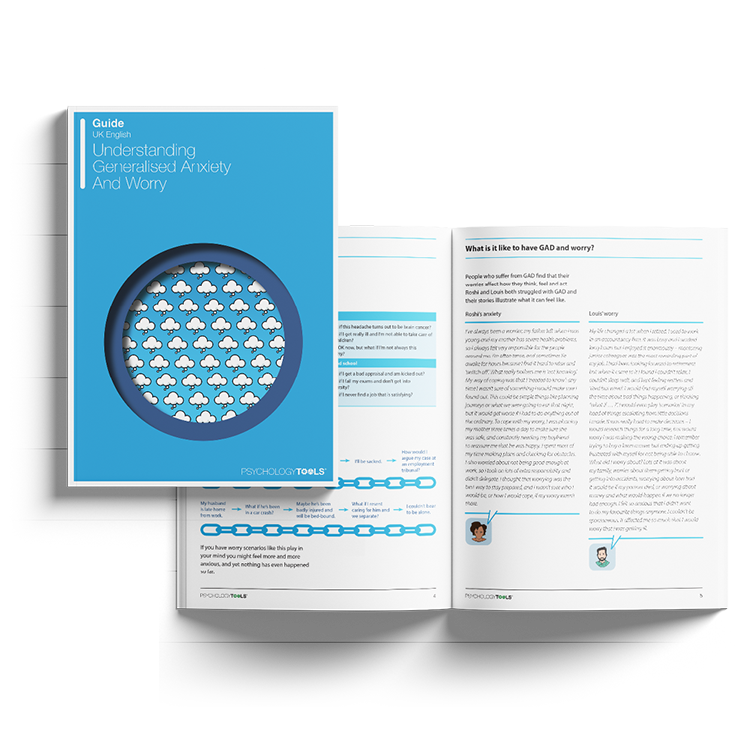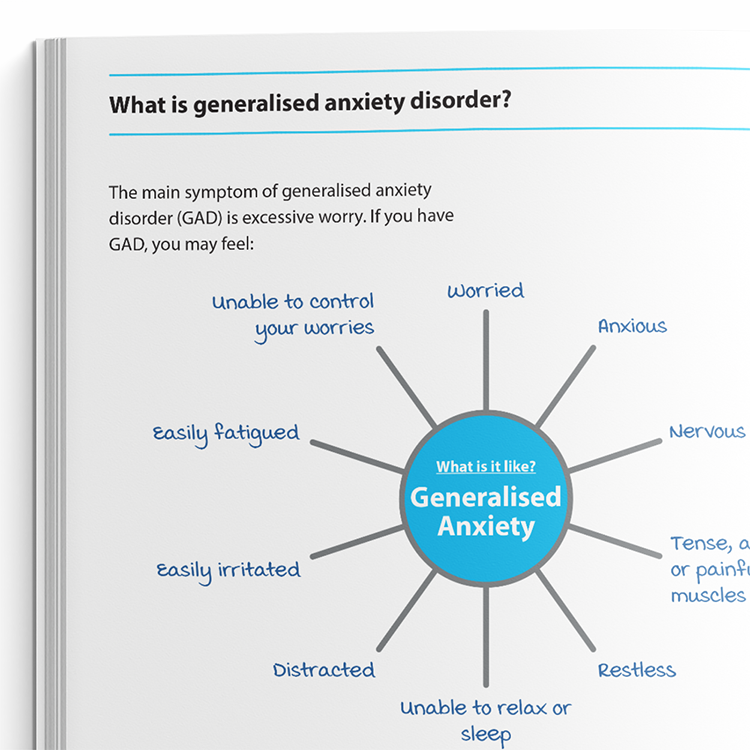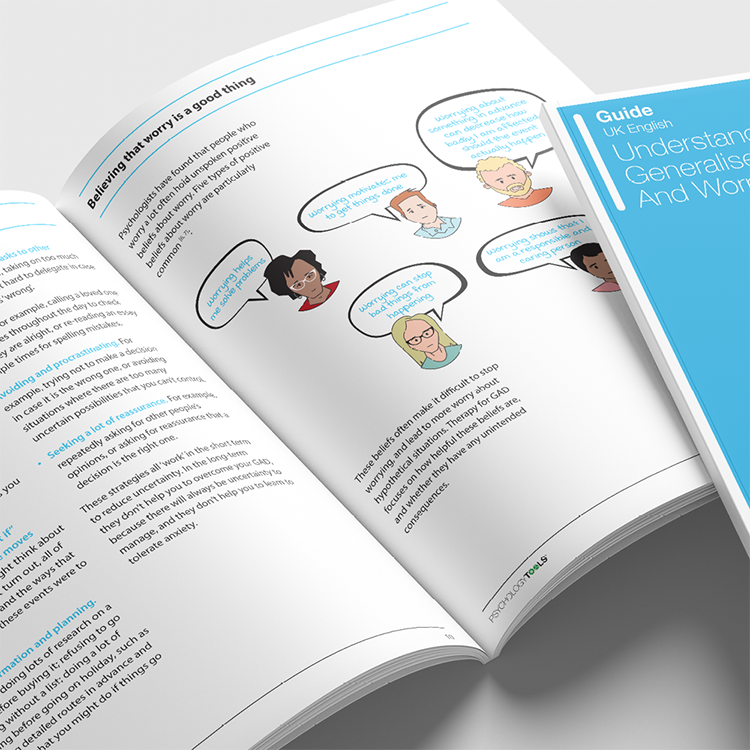Guide (PDF)
A psychoeducational guide. Typically containing elements of skills development.
An accessible and informative guide to understanding generalized anxiety disorder (GAD), written specifically for clients.

A psychoeducational guide. Typically containing elements of skills development.
To use this feature you must be signed in to an active account on the Advanced or Complete plans.

Our ‘Understanding…’ series is a collection of psychoeducation guides for common mental health conditions. Friendly and explanatory, they are comprehensive sources of information for your clients. Concepts are explained in an easily digestible way, with plenty of case examples and accessible diagrams. Understanding Generalized Anxiety And Worry is designed to help clients with generalized anxiety disorder (GAD) to understand more about their condition.
This guide aims to help clients learn more about generalized anxiety disorder (GAD). It explains what GAD is, what the common symptoms are, and effective ways to address it, such as cognitive behavioral therapy (CBT).
Designed to help clients understand and learn more about GAD.
Helps clients explore their experiences with worry.
Identify clients who may be experiencing generalized anxiety disorder (GAD).
Provide the guide to clients who could benefit from it.
Use the content to inform clients about GAD and help normalize their experiences.
Discuss the client’s personal experience with GAD.
Plan treatment with the client or direct them to other sources of help and support.
Occasional worry is a normal part of life, but when worry becomes excessive, persistent, and difficult to control, it can become exhausting and negatively impact individuals' physical and mental health. This pattern of chronic worry is referred to as generalized anxiety disorder (GAD). Epidemiological data suggest that between 2% and 6% of the population experience GAD in any given year.
Effective psychological treatments are available for GAD, with cognitive behavioral approaches showing strong evidence of benefit. The Understanding Generalized Anxiety and Worry guide is intended to support clients in developing a clearer understanding of GAD. In addition to outlining common symptoms and evidence-based treatments, the guide highlights key psychological processes that contribute to the maintenance of GAD, including intolerance of uncertainty, beliefs about worry, and a tendency to approach problems with a negative mindset.

Just enter your name and email address, and we'll send you Understanding Generalized Anxiety And Worry (English US) straight to your inbox. You'll also receive occasional product update emails wth evidence-based tools, clinical resources, and the latest psychological research.
Working...
This site uses strictly necessary cookies to function. We do not use cookies for analytics, marketing, or tracking purposes. By clicking “OK”, you agree to the use of these essential cookies. Read our Cookie Policy